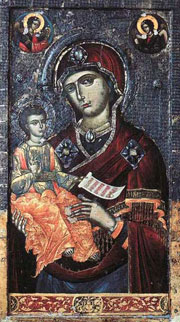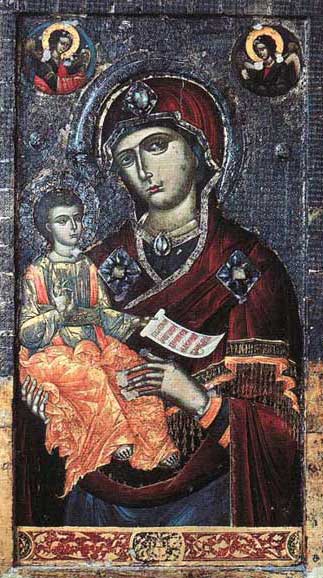Constantine of BERAT

Constantine of Berat (ca. 1745 - ca. 1825), known in Albanian
as Kostandin Berati or Kostë Berati, is thought
to have been an Orthodox monk and writer from Berat. Some experts
doubt his existence, as an author at least. He is said at any
rate to have possessed a manuscript from 1764 to 1822, presumably
the 154-page work now preserved in the National Library of Tirana.
This so-called Codex of Constantine of Berat, or Codex of Berat
for short, is in actual fact a simple paper manuscript and must
not be envisaged as an illuminated parchment codex in the Western
tradition. It seems to have been the work of at least two hands
and was completed around 1798 at the earliest. It contains various
and sundry texts in Greek and Albanian: biblical and Orthodox
liturgical texts in Albanian written in the Greek alphabet, all
of them no doubt translated from Greek or strongly influenced
by Greek models; two Greek-Albanian glossaries comprising a total
of 1,710 entries; a short passage containing another original
alphabet; various religious notes; and a chronicle of events
between 1764 and 1789 written in Greek. Some of the religious
texts in this manuscript later circulated for teaching purposes
among the Orthodox communities of central and southern Albania.
Among the texts in the Codex of Berat is a forty-four-line
Albanian poem, with the corresponding Greek text, called Zonja
Shën Mëri përpara kryqësë (The Virgin
Mary before the Cross). Written in so-called fifteen-syllable
'political' verse (stichos politikos), it is an unaffected though
sincere and not unmoving description of the horror felt by the
Virgin Mary on seeing her son nailed to the cross. The poem seems
to be based on a Greek original by Akakios Diakrusês of
Cephalonia, published in 1730.
|
BACK


![]()